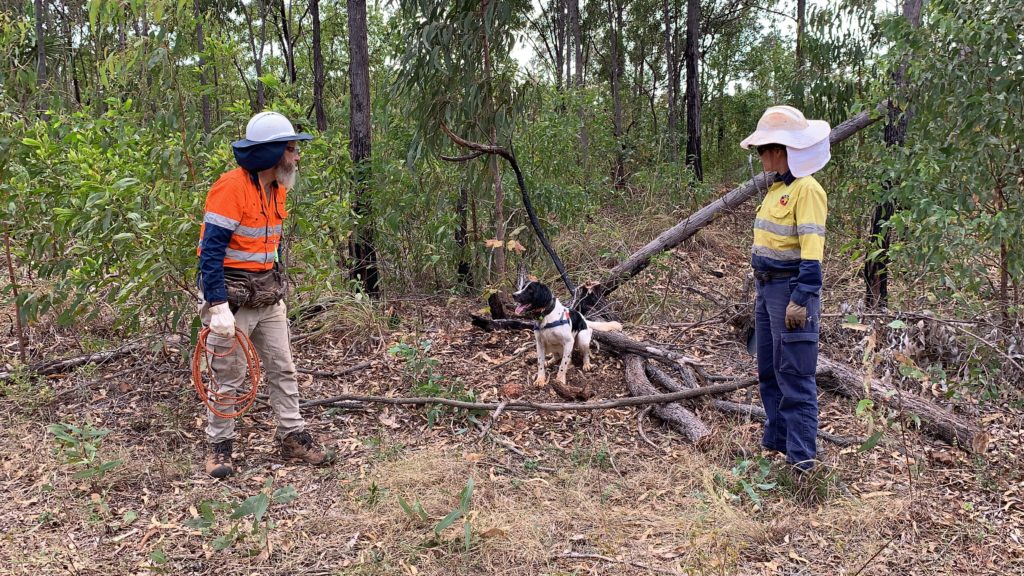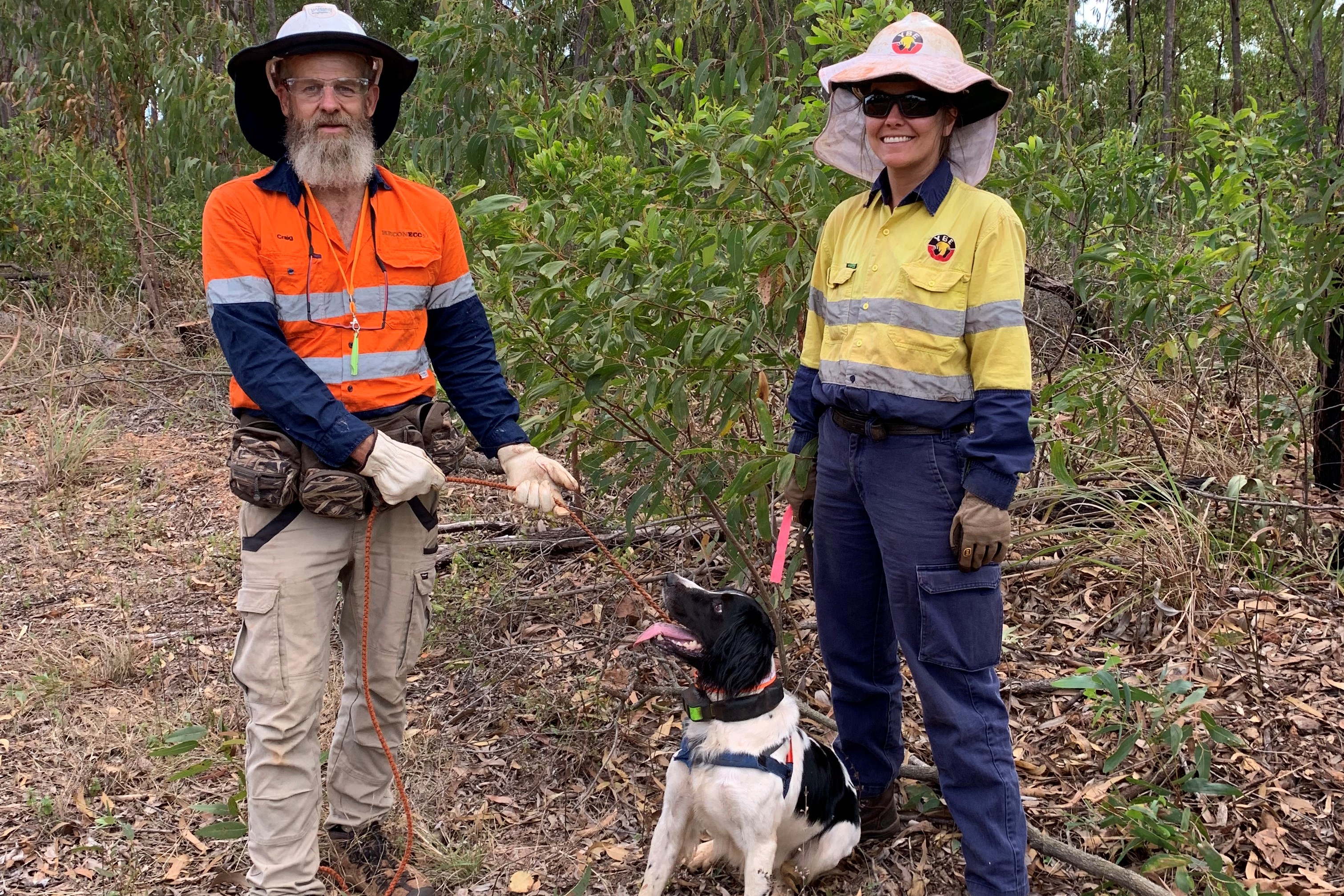
We’re keeping these crazy critters in check.
As if Australia didn’t have enough native creepy crawlies to contend with, our top-end is battling a big problem. And it’s with one of the world’s smallest but most invasive pests, the Yellow Crazy Ant. Invasive pests like these ants are Australia’s number one extinction threat.
The yellowish-brown coloured ants were first discovered making home in Australia in the early 1980s. They were spotted in Nhulunbuy in East Arnhem land. Since then, the Yellow Crazy Ant, or Anoplolepis gracilipes if you want to get formal, has been found in several eastern Australian locations including Cairns, Townsville, Brisbane and even Christmas Island.
But we’re stopping them dead with the help of some four-legged friends.
What’s so crazy about these ants?
Moving in an erratic and frantic manner, you need only disturb these ants to see how they got their name.
These ant armies are a rather destructive bunch and pose a major threat to Australia’s biodiversity. They wipe out native green tree ants and other invertebrate species and they’re also a threat to agricultural crops.
While they are aggressive in nature, they are quite social, gathering in large densely populated packs to create super colonies. These super colonies have been known to reach 20 million worker ants per hectare with thousands of queen ants to rule them.
To request a transcript please contact us.
For more than a decade, we’ve been on a mission to help eradicate these pests from the Northern Territory. The program has been highly successful to date, with the eradication of the ants from around 100 hectares of land.
But the job is as big as the ants are small. There were hundreds of hectares still to be assessed. And a huge mine site, covering about 10,000 hectares, still needed to be fully checked. So, it was determined that this job was too time-consuming and labour intensive for the human teams. We needed to call in some backup.
Jet the turbo ant detector

Good boy Jet ready to look for yellow crazy ants
Don’t let his floppy ears and wagging tail fool you, Jet means business. With his eye on the prize and his bright red ball, Jet has already sniffed out over 300 hectares in two short months on the job.
Using his superior sight, hearing and sense of smell, Jet has been able to cover two hectares of ground a day. He’s running rings around the human teams who take around eight days to cover the same area. He is even sniffing out any nests that have survived the toxic treatments, or ants that were not originally found by people.
To request a transcript please contact us.
We all know dogs have a nose for finding even the most well-hidden things. That’s why the Australian Quarantine and Inspection Service and Police use them to find illicit items.
Around 10 years ago, Australia started to use detector dogs in ant eradication programs. This was specifically the detection of the Red Imported Fire Ant and Electric Ant in Queensland. Dogs are now an invaluable element of both programs. Off the back of these successful ant eradication programs, it seemed a natural fit that man’s best friend be trained and recruited to help with Yellow Crazy Ants.

Doggo days: Jet’s snoot is set for sniffing
Prior to Jet joining the ant hunt, our project team trialled a range of ant treatment options which were deployed. The team saw varying degrees of success with these products and deployment methods. However, with Jet onboard, our scientists are closer to getting a definitive answer of the best ways to treat this pesky problem.
All in a day’s work for our poochie pal.
This research is being conducted with Rio Tinto and YBE (2) Pty Ltd.


18th December 2019 at 3:49 pm
Very good use of a mutt, thanks to their incredibly sensitive noses. In regard to actually killing the ants in their nests, has anyone looked at Paul Stamets research on using Metarihzium fungus as an ant nest pesticide?
8th November 2019 at 8:58 pm
thanks to all the research conducted by scientists who labour under trying conditions god bless them. but why do we have to destroy to irradicate pests dont pests have their usefulness
28th September 2019 at 12:16 am
What breed of dog is Jet? Looks like a Brittany?
25th September 2019 at 10:16 am
What a great story. Can we also use them for fire ants and European wasps?
3rd October 2019 at 10:02 am
Hi Rod,
Yes! In fact, there is a team of dogs detecting fire ants in Queensland. Theoretically, it would be possible to have a dog trained on wasps too.
Hope this helps.
Kind regards,
Kashmi
Team CSIRO
24th September 2019 at 9:40 am
I love this!